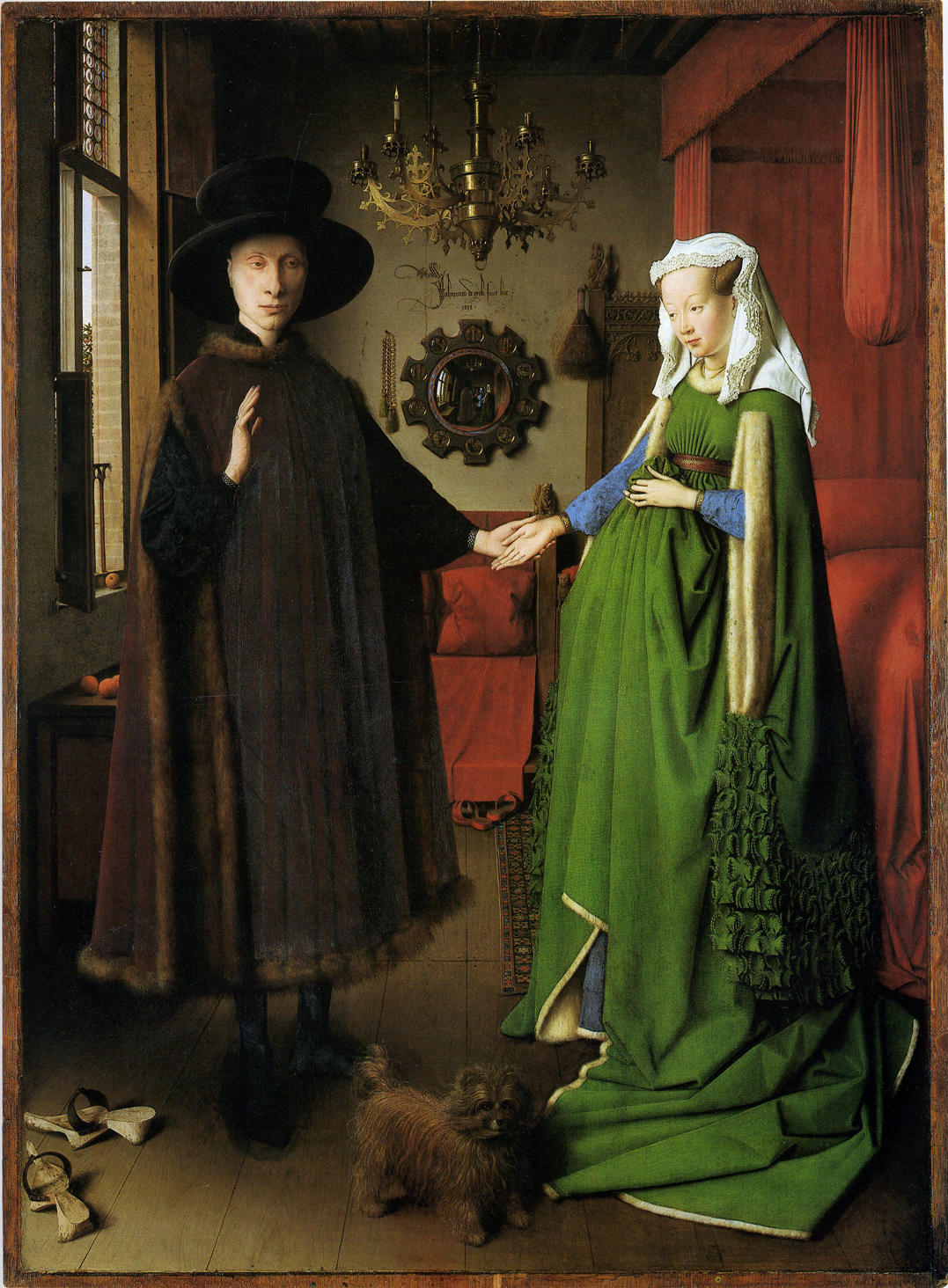
The world famous painting of an early Flemish artist, Jan Van Eyck, entitled “Arnolfini Wedding” is probably one of the most enigmatic and symbolic European masterpieces that have been preserved to our time. Painted in 1434, it still inspires researchers and art critics for new interpretations and iconographic analyses.
The two people depicted in the painting, also referred to as “Arnolfini Double Portrait,” are correspondingly Giovanni di Nicolao Arnolfini, a prosperous merchant of the time, and his wife, Giovanna Cenami (Criminisi, Kemp and Kang 3).
The couple is portrayed in their room, and the detailed interior and clothes depiction reveals the customs and traditions of the contemporary society; such accuracy, though characteristic of the Flemish style, is extremely impressive for the viewers. Craig Harbison notes that this scene from the certain class’s routine makes the painting unique as no other paintings of such topic and time have been preserved.
The researcher also points to the fact that none of the figures in the painting look at the viewers, which makes an impression of them being alone in the room. The dog, however, identifies the presence of other people in the room by its alert position. The ultimate evidence of someone else’s presence in the room can be found in the tiny mirror at the background, where two men, dressed in blue and red correspondingly, are reflected (Harbison 33).
A survey conducted on the mirror glass curves and its reflections showed that Van Eyck’s accuracy in perspective depiction is rather high, which allows assuming that the painting was created in the conditions of a real staged setting. The study also suggests that the artist did not sit closer to the mirror to paint the small details, but painted it at a distance instead.
As reaching such accuracy in such conditions is virtually unimaginable, the odds are in favor of the Hockney hypothesis of a projector such as a camera obscura having been used in the process of the masterpiece creation (Criminisi, Kemp and Kang 18).
In any case, the magnetic mirror plays a central role in the painting, as, besides serving as a tool for illusionary perspective, it also contains the signature of the author, as well as the date, which is not typical of the paintings of the time when most signatures were left on panels or frames (Harbison 33).
One of the most recognized iconographic analysts of the painting, Erwin Panofsky, finds the characters’ ability to marry anyone at any convenient time and place to be the key theme of the Van Eyck’s work (Hall 51). In contrast, Craig Harbison points to the multifaceted structure of the painting’s theme, viewing it as a combination of contrasts.
Thus, the researcher highlights the main juxtaposed notions in the painting, such as man and woman, inside and outside, tree and bed, etc. Also, one of the central themes covered in the painting, according to Craig Harbison, is the nature of contemporary relationships between a man and a woman and their social roles.
For instance, the man’s position near the window as of an active observer of the street life is contrasted to the woman’s draped clothes and her placement near the bed, which points to the traditional passiveness and calmness of women in society. This juxtaposition is intensified with the characters’ shoes being placed in front and the background correspondingly (Harbison 34).
All in all, besides demonstrating the artist’s skills and familiarizing us with the contemporary customs, the painting contains a multitude of symbols and meaningful hints which preserve its magnetism through the centuries.
Works Cited
Criminisi, Antonio, Martin Kemp, and Sing Bing Kang 2005. Reflections of Reality in Jan van Eyck and Robert Campin. PDF file. 2014.
Hall, Edwin. The Arnolfini Betrothal: Medieval Marriage and the Enigma of Van Eyck’s Double Portrait, LA: University of California, 1997. Print.
Harbison, Craig. Jan Van Eyck: The Play of Realism, London: Reaction Books Ltd, 1999. Print.